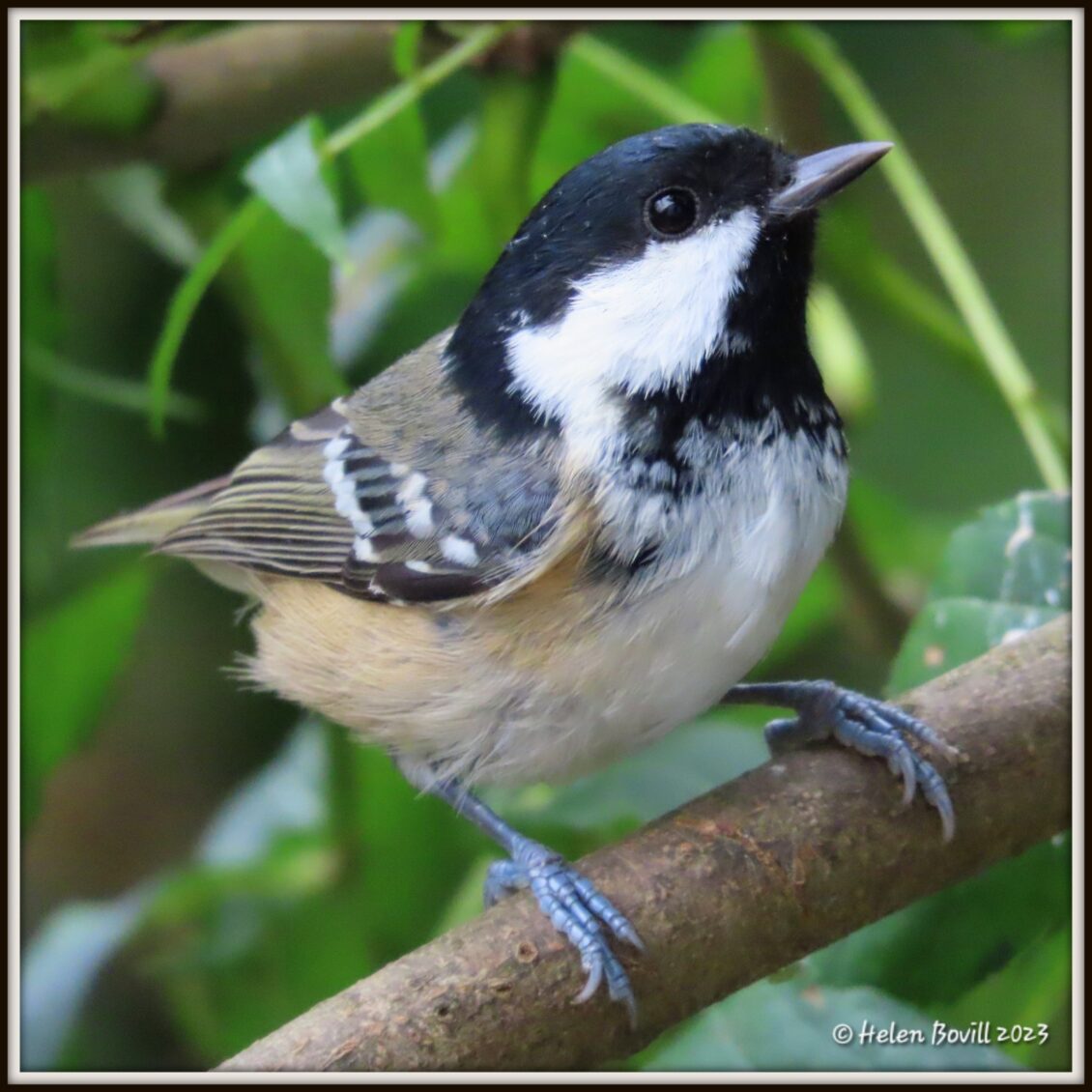September started off unusually hot. Temperatures reached the high 20s, possibly even 30, in the first week, qualifying as a heatwave. An unexpected end to the summer here! The trees still had all their leaves though, giving plenty of shade to cool down the cemetery wildlife. As a result, the ground remained damp throughout this period. Autumn officially started in the last half of the month, and it started with quite a few rainy days. Some of the rainfall was quite heavy and the paths are rather muddy again. High winds brought down a few medium-sized branches but no major damage was caused.
Birds
I started this report with one of the two Coal Tits I’ve been seeing regularly this month. These little birds are very slightly smaller than Blue Tits but their colouring is quite different.
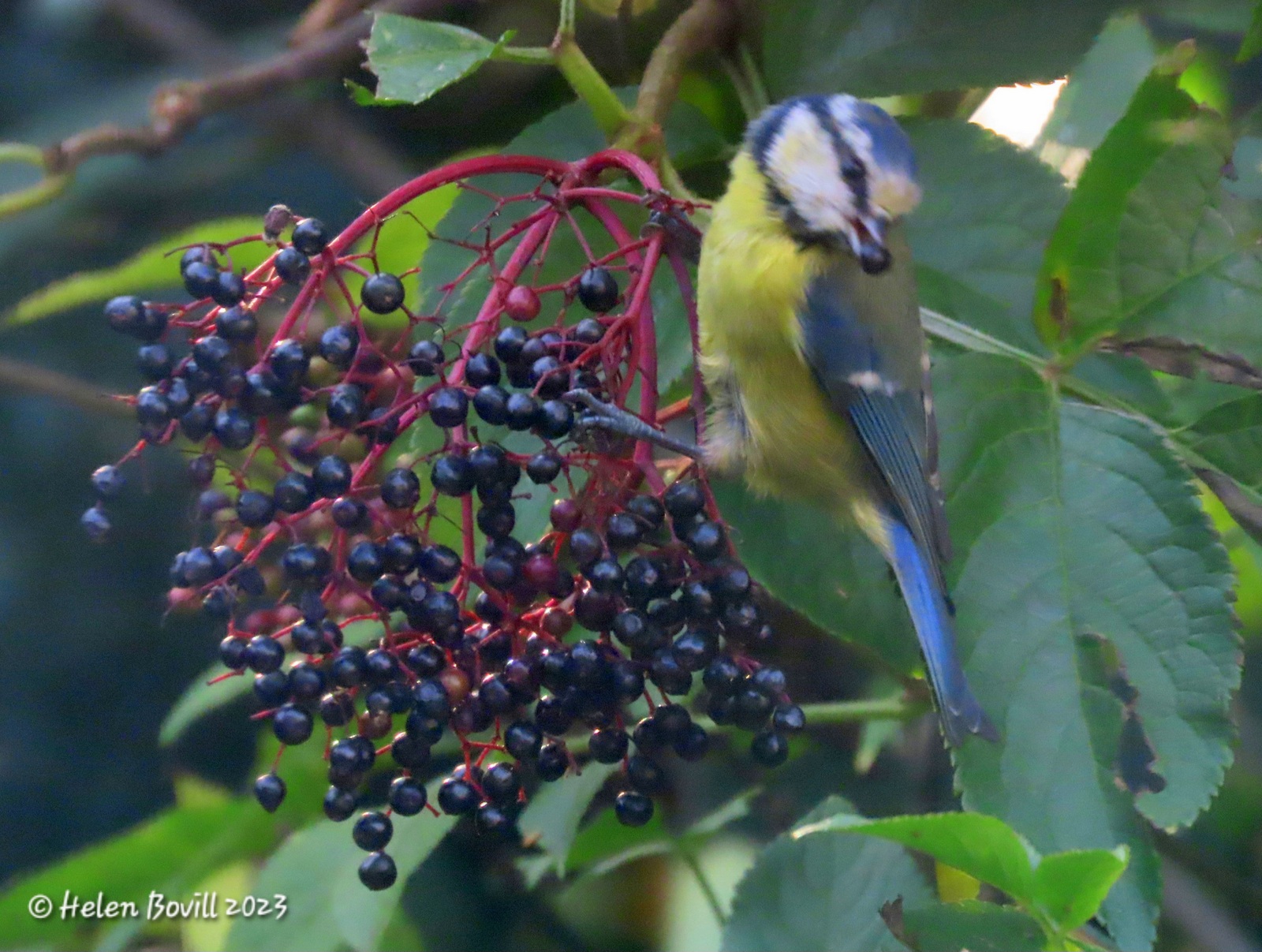
There is plenty of food for the birds now because of the berries on many of the trees and shrubs. The Elderberry bushes with their fruitful abundance are particularly popular as you can see from the photo above. I saw other species that are light enough to perch on their thin stems too, such as Chaffinches and Blackcaps.

Blackbirds like the Elderberries too!

Other birds I’ve seen this month are Goldfinches, Wrens, Great Tits, Robins, Wood Pigeons, Crows, Magpies and Dunnocks. I haven’t had any more sightings of the Bullfinches I saw a couple of months ago. A visitor to the cemetery told me he’d heard a Tawny Owl calling in the area near the Owl boxes. Our end of year survey of the bird boxes should reveal whether or not they’ve nested in the cemetery this year.
Plants
The Pyracantha bushes are now laden with berries, adding some welcome colour and providing food for the cemetery wildlife.

A one metre strip of grass along the verge on Spring Bank West was cut by the Council earlier in the month during the hot weather. The rain that arrived mid-month helped the regrowth, and there are now a few Dandelions flowering. The Musk Mallow has survived the cut, and a small clump of Ragwort is still in flower.

The Ivy is now in flower, but generally there were not many flowers to be seen in September. I did see a few flowers on one of the bramble bushes, and on this Ribwort Plantain.

It’s easy to miss these flowers, which look quite different to other more traditionally shaped ones. I also found some Cyclamen growing in the cemetery near the Cholera Monument.
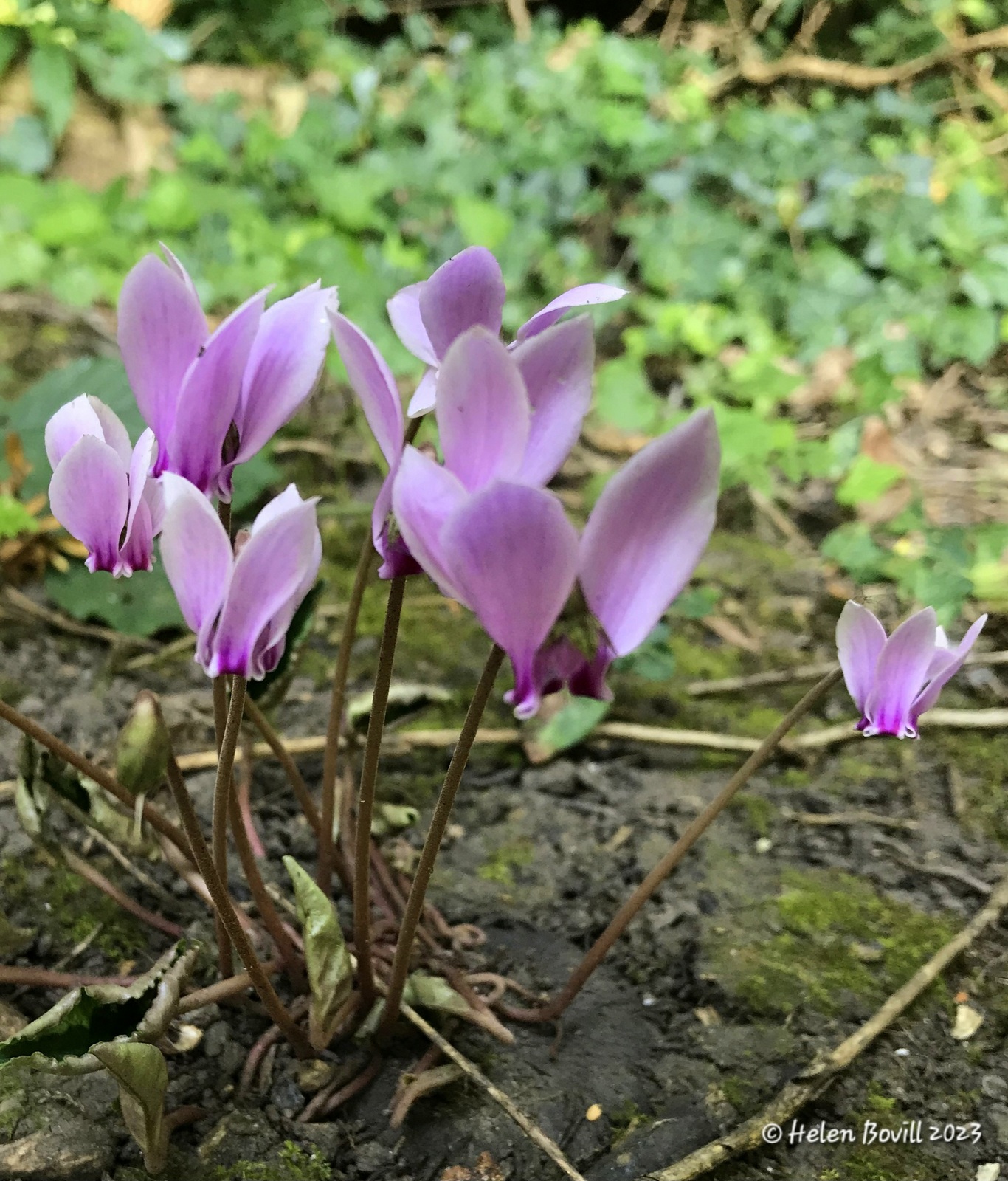
The main things to be found on the plants at the moment are berries as already mentioned, and seeds such as on this Dock.
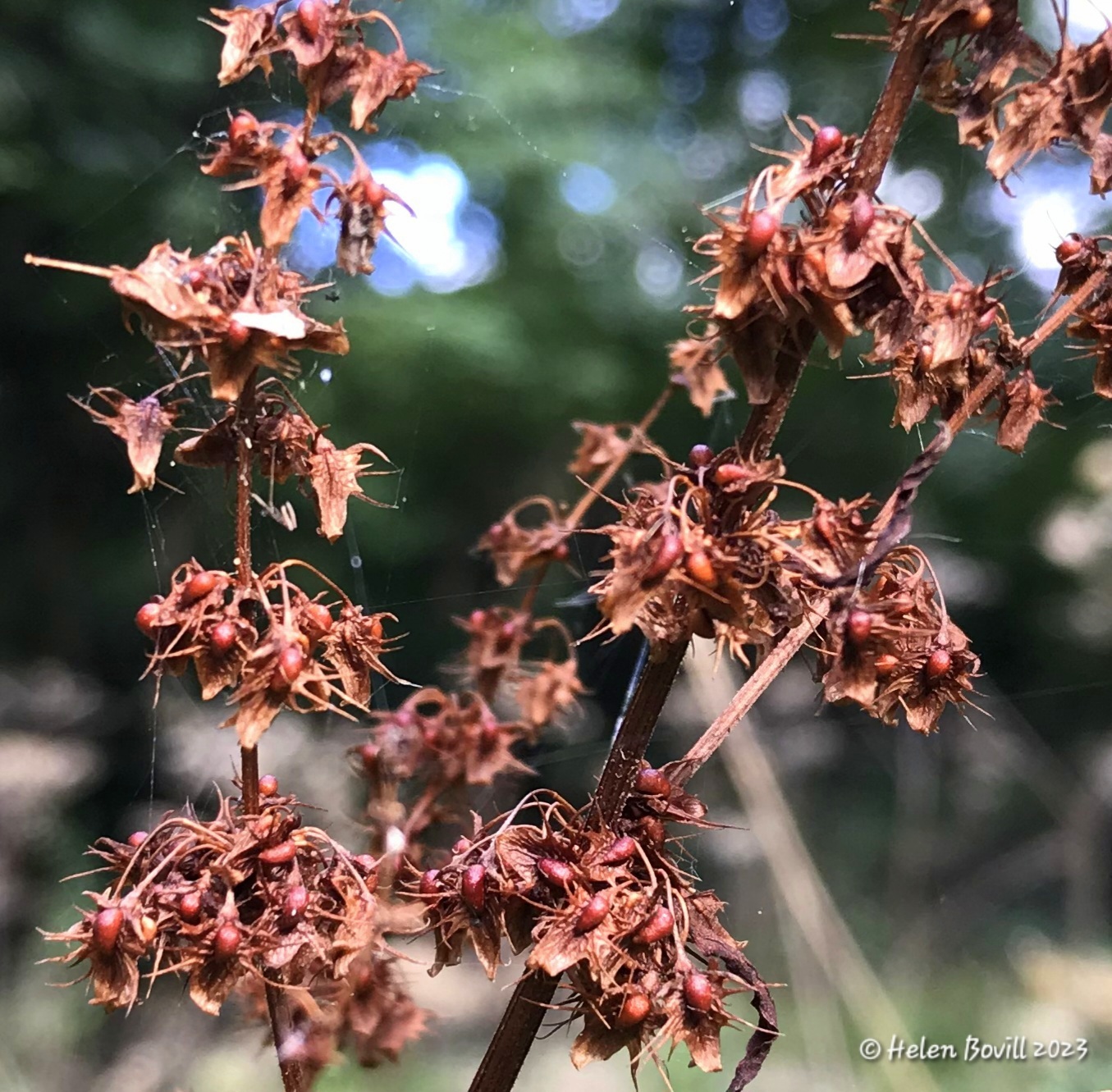
Insects and other small creatures
I’ll start with Butterflies, as they’re still around in September but in much smaller numbers. I’ve seen Small White, Large White, Red Admiral and Speckled Wood. I can always rely on the latter for a photo, and they often fly on overcast days as well as sunny ones.
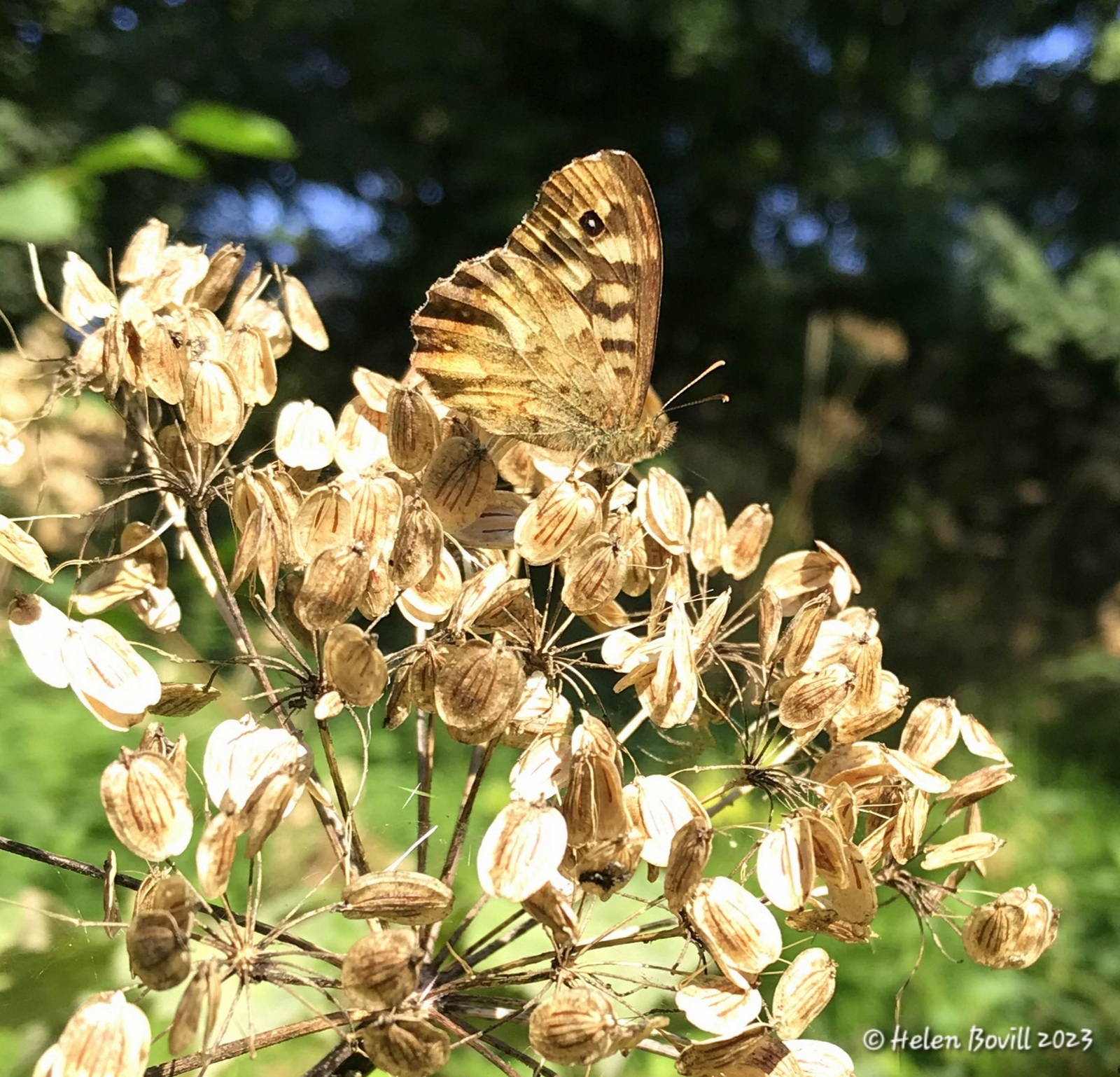
I’ve also caught brief glimpses of the occasional Dragonfly around the cemetery, but none have landed anywhere so identification wasn’t possible. It’s surprising to see them here, especially as there is no pond or other source of water in the cemetery. The abundance of vegetation and damp areas most probably explains their presence.
There are still plenty of hoverflies and bees around, making the most of the flowers on the Ivy. Large queen bees are feeding up on the nectar to sustain themselves during their winter hibernation.

Snails are not insects of course – they’re molluscs – but I thought this White-lipped one was worthy of inclusion because of its attractive shell. It seems to be one of our regular species and stands out nicely on dried plant stems.
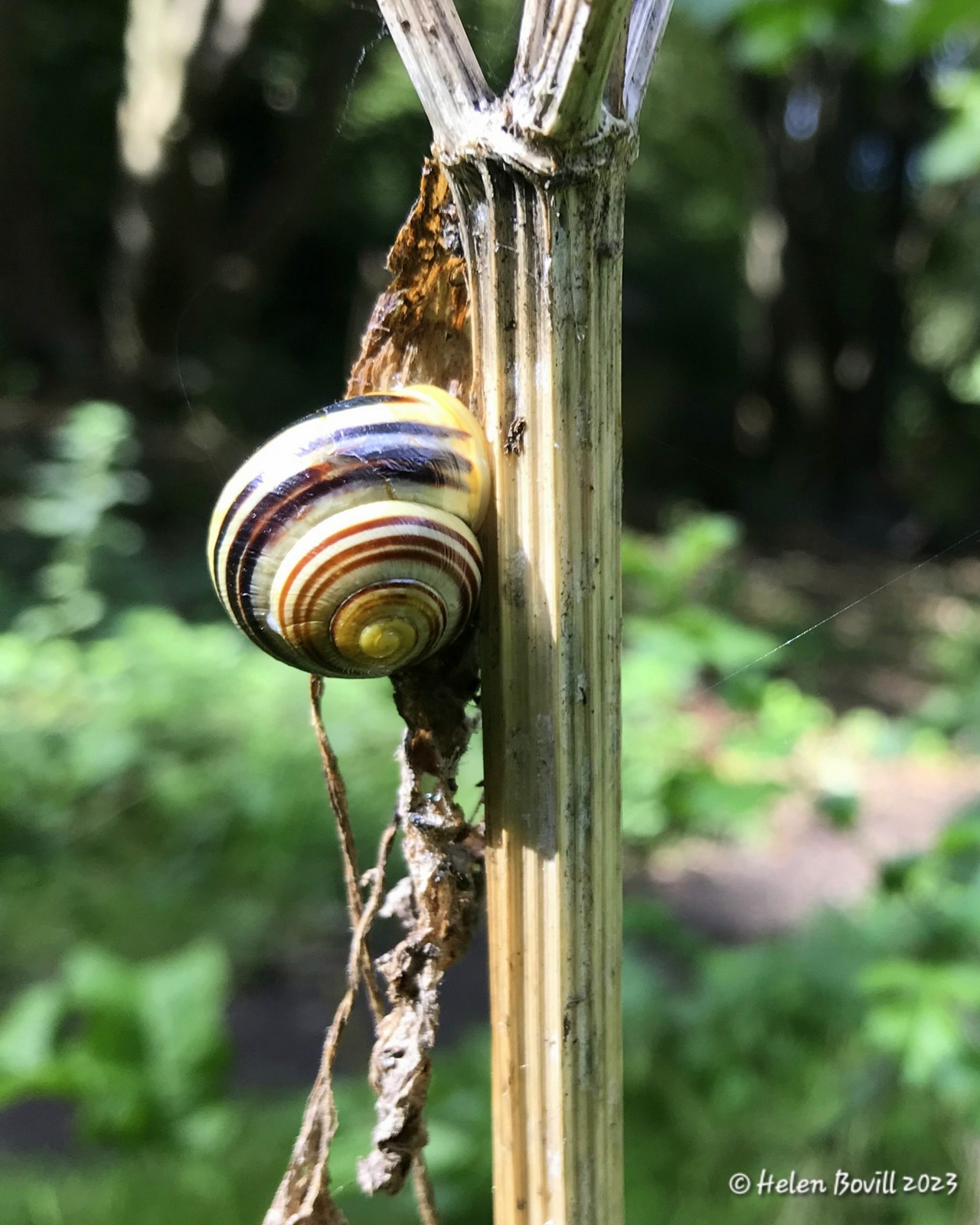
Conclusion
It’s been a quiet month, with nothing unusual to report as far as the cemetery wildlife is concerned. I occasionally hear a fox calling later in the evenings, and they do live in the cemetery. They seem very wary and secretive though. However, a regular volunteer had a good view of a fox early one evening.
When you spend a lot of the time in the cemetery, either volunteering or just enjoying a leisurely stroll, you get to see certain individual animals that stand out from the rest. Here’s one such animal – I call this squirrel Nick because of those distinctive tears or nicks in both ears. Whether these were present at birth or if they’re the result of a disagreement with another squirrel I don’t know. But here he (or she) is!



